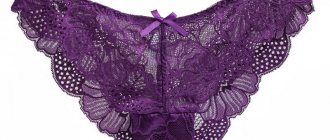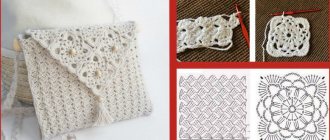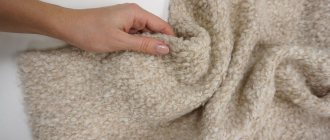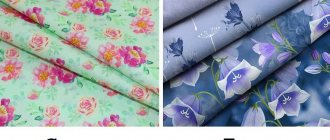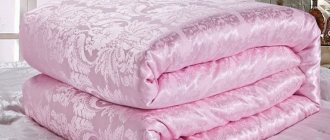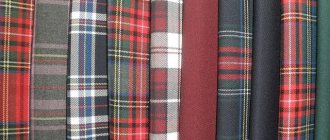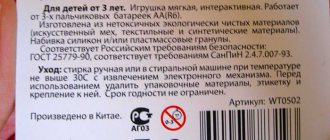Cage Guide: The Most Famous Patterns
How often do we see prints and patterns on fabrics that have already become familiar in stores, on catwalks, on the Internet and on TV, but we don’t know what they are called correctly! Without realizing it, we say “checkered fabric” in reference to so many different patterns that it literally borders on disrespecting the history of these famous patterns. Today, as part of our new Theme of the Month, our “Cage Guide” will help you understand the intricacies of ornaments!
Tartan
Most often, tartan is called “tartan”, although in fact these two words originally meant slightly different things: tartan - fabric, tartan - pattern. Of course, this print is famous thanks to Scottish kilts: “tuar tan” translates as “color of the area,” and this is by no means lyrical poetics, but the most practical reality - the Scottish clans dyed sheep’s wool for kilts with natural dyes. Some used seaweed for brown, some alder bark for black, some blueberries for blue, and since different dyes were obtained in different parts of Scotland, the colors of the tartan clearly indicated where the clan came from. So it’s not surprising that there are a huge number of varieties of tartan in the world, each of which has its own name.
"Black Watch"
One of the most famous tartans is the Black watch military tartan, which translates as “black watch”. In 1739, George II created this special regiment, which spent the next 270 years guarding the interests of the British Crown. Over these long years, the Black Watch fought 164 battles, each of which with distinction. Today, any of us can touch history by choosing this noble pattern of deep, rich tones.
Burberry
In 1924, a checkered pattern appeared on the lining fabric of the trench coats of the famous British brand Burberry, which is now unmistakably recognized by any fashionista. The print consists of four colors: black, white, sand and red. The brand's founder, Thomas Burberry, was inspired by the traditional patterns of English plaids. The Burberry check is called Nova Check.
Glencheck
This discreet pattern appeared in the 19th century as one of the varieties of the Countess of Seafield's ancestral tartan. The Countess dressed her huntsmen in glenchek, and it was during the next hunt that Edward VII, Prince of Wales first saw it. The royal loved this check so much that he asked to have a suit made from a similar fabric, and thanks to the prince’s undiminished affection for this pattern, the nickname “Prince of Wales” was assigned to the glencheck. The classic glencheck is characterized by an achromatic color scheme; the main colors used in this pattern are white and black or, as an option, gray. It is entirely acceptable to use other muted tones, the main thing is the alternation of light and dark stripes, vertical and horizontal, the interweaving of which forms a pattern. Of course, glencheck is ideal for men's suits, due to its restraint and aristocracy, but nowadays this check is equally popular in both men's and women's fashion, and even among interior designers.
Vichy
Vichy check - straight from the warm French Provence! This extremely simple type of cell was invented by local craftsmen in 1850 in the town of Vichy. The pattern is a small checkered pattern, mainly made of two colors, most often red-white or blue-white. It is noteworthy that the French themselves did not rate the invention highly - the pattern was used for tablecloths and napkins. But in America, the Vichy check literally drove everyone crazy - in the 50s, Brigitte Bardot appeared on the cover of ELLE magazine in a dress with a full skirt made of white and pink checkered fabric, which marked the beginning of the triumphant march of Vichy through the wardrobes of fashionistas all over the world .
Chicken foot
If, when you see this pattern, you are ready to confidently say “Chanel” - alas, I will have to interrupt you! Chanel, of course, contributed to the popularization of this ornament, but its ancestors were... the same Scots! In its modern form, the “chicken foot” appeared in the 19th century, formed on the basis of border tartan. You can also find the name “dog tooth”, but, as a rule, this name refers to the pattern if it is depicted noticeably larger than the classic version. This unique name is justified by the fact that the pattern really looks like the front fangs of a dog or the prints of chicken paws.
Pepita
Many people confuse “pepita” and “chicken foot”, because at a superficial glance they are really similar, but in fact they are significantly different. "Pepita", named after the Spanish dancer known as Pepita de Oliva, consists of small squares with small "curls" at the corners. These three patterns should not be confused:
1. Pepita 2. Border tartan 3. Chicken foot
Madras cage
Unlike the dense, heavy fabrics that we looked at before, Madras check fabric is the embodiment of summer; it was not without reason that it was invented in the Indian city of Madras (now Chennai). During the period of British colonization of this territory, Indians developed this comfortable fabric, borrowing a pattern from the world famous tartan check. But the tropical climate and love for bright colors could not help but leave their mark - the Madras check is associated with catchy, noticeable colors and unusual combinations. Real madras can be distinguished by a characteristic feature - the pattern is present on both sides of the fabric.
Tattersall
Initially, the word “tattersall” meant the ornament on horse blankets sold by Tattersall's, but later these checks migrated to men's shirts, after which they set off to float freely on the waves of fashion. The most common background colors are white, beige, cream, and the stripes themselves can be red-black, blue-black, violet-brown, blue-violet, pink-green, although if desired, you can find a wide variety of color combinations. Photo: pinterest.com
MORE INTERESTING ARTICLES, MASTER CLASSES AND PATTERNS ARE WAITING FOR YOU ON THE TOPIC PAGE OF THE MONTH!
Understanding the names of plaid fabrics
Plaid is one of the trends of the season. Today, not only plaid shirts are in fashion, but also jackets, trousers, jackets, scarves...
Let's figure out what the different types of plaid fabrics are called.
The most famous, perhaps, is the Burberry check .
The official year of birth of the cage is 1924. Trench coats, invented by Thomas Burberry, quickly gained enormous popularity on the eve of the First World War. Straight, waterproof coats, knee-length, tied with a belt, were originally intended for soldiers, but were liked by many. And with them comes the checkered pattern, because to create the lining they used a pattern of four colors: black, white, sand and red.
"Vichy"
In 1850, in the French town of Vichy, local weavers invented a special type of check - “Vichy”. This is a small cell, mainly of two colors (one of which is most often white).
Initially, Vichy checks were used for bed linen, but gradually the pattern became increasingly popular and over time moved to napkins, tablecloths, upholstery, curtains and bed canopies. And of course, this check is definitely associated with Provence and Country style.
“Chicken foot” (“pie-de-coque”), “hounds foot” (“pie-de-poule”), “dog tooth”
The pattern got such a strange name for very simple reasons - its ornament really looks like the front fangs of a dog or the prints of a goose's paws.
In its modern form, the “crow’s foot” took shape only in the 19th century. Until that time, it existed under the guise of its older brother, called border tartan. By the way, its name came from the region along which the border between Scotland and England ran; it was called Border.
Fabrics with such a pattern were introduced into fashion by Coco Chanel in the 20-40s of the 20th century. In England and Finland this larger design is called a “dog tooth”.
"Pepita"
A small pattern on the fabric in the form of squares “with curls”. Pepita, the tartan fabric most often confused with Chicken's Foot, was named after the Spanish dancer Joseph de la Oliva. Pepita de Oliva was her nickname. The Pepita pattern consists of small two-color cells with a diagonal connection, in contrast to the “chicken's foot”, where the connection between each cell is strictly at right angles. The size of each Pepita cell is only up to 1 cm!
"Madras"
Thick cotton fabric with a large-sized printed multi-color checkered pattern with an asymmetrical composition; named after a large industrial city in India.
"Prince of Wales" (Windsor check)
Mentions of this design on fabric date back as far as 1471. In its modern form, it was named, of course, in honor of Edward VIII, who was distinguished by his original fashion preferences and showed remarkable courage in creating his own style. It was thanks to him and his unbridled love for this print that the check became a fashionable pattern and turned into one of the classic patterns in men's clothing.
Wallis Simpson and the Prince of Wales
Tartan (tartan)
The most famous tartan garment is the Scottish kilt.
1. “Caledonia” is a universal tartan that every Scot can wear 2. “Black Watch” is a military tartan that became the basis for many clan tartans, such as “Gordon” and “Campbell” 3. “Dress Campbell” is the ceremonial tartan of Clan Campbell 4. “Burberry” - a tartan created for the company in 1920 and entered into the register in 1985 5. “Dress Gordon” - an elegant version of the Gordon clan tartan 6. “Royal Stewart” - the most famous tartan in the world
The fashion for tartan was introduced by none other than Queen Victoria of Britain, who adored “everything Scottish.” It was she and her husband Albert who came up with the idea of decorating their residence with checkered decorative fabrics.
Argyle
The history of this drawing is mysterious. Some argue that it is based on the St. Andrew's flag (the national flag of Scotland). Others believe that Argyle is a creative re-imagining of the pattern that appeared on the kilts of the Scottish Clan Campbell, who lived in the Argyll region.
The Argyle pattern is inextricably linked with the name of Robert Pringle, who founded the Pringle of Scotland company in 1815. For the first hundred years it was engaged in the production of knitted underwear and stockings. It was Pringle of Scotland that introduced the diamond pattern into world fashion. Argyle reached its peak of popularity after the First World War. Still would! After all, Pringle of Scotland products began to be worn by the British King Edward VIII while playing golf.
Until the 1930s, Argyle adorned the least visible item of clothing—socks.
And in the 1930s, it began to be used in the production of knitted clothing. By the 50s of the twentieth century, Pringle of Scotland reached the peak of popularity and became a cult brand.
Fashion education: 5 types of cells you need to know
In the tailor shop on London's Savile Row, where suits are made for royal families, politicians and billionaires, they know and use dozens of different types of plaid. We don’t need such a depth of immersion yet; five basic options will be enough, which will be useful when tailoring a custom suit and will enrich the fashion vocabulary. “What a beautiful tartan jacket you have” still sounds more impressive than just “checkered.”
Tartan or tartan
One of Vivienne Westwood's favorite prints, which is found in almost every collection of the queen of punk. Traditional tartan, as the name suggests, originates from Scotland, where each clan had its own color of tartan. With its help, they identified representatives of their own or friendly clans long before meeting them face to face in the highlands - a bright tartan can be seen from afar.
Window frame, or windowpane
The classic print of men's ateliers was forgotten for a long time, but in recent seasons it has gradually returned to the catwalks. The windowpane checker suggests wide spaces between the lines that resemble glass in a window frame. The space between the lines is usually rectangular, elongated vertically, which helps visually elongate the silhouette.
Gingham, or Vichy
This variation of the cage was invented in 1850, and since then it has already experienced more than one wave of popularity. Initially an element of home decor, Vichy seeped into the wardrobes of fashionistas in the 20th century, and after Brigitte Bardot got married in a light dress with this print, it consolidated its status. Today, colored (blue and red) Vichy has become a symbol of Provence style, and black and white gingham is actively used in business wardrobe.
Glenchek, or “Prince of Wales”
The Glencheck cell first appeared in the 19th century in the Scottish Highlands near Loch Ness. From a technical point of view, glenchek is considered a type of tartan, but the pattern in it is formed not by lines, but by miniature curls. The Prince of Wales pattern became popular in the 1920s in men's wardrobes, and by the 1930s it had filtered into women's wardrobes. To this day it is one of the most popular prints on Savile Row.
Houndstooth, houndstooth, or pied-de-poule
One of the oldest prints, which is a logical development of the glencheck, is the houndstooth, which in English is translated as “dog tooth”, first appeared a couple of centuries BC. In the 20th century, its most famous fan was Audrey Hepburn, and this print was often used in the House of Christian Dior. For the “Cornucopia” fall-winter 2009 show, Alexander McQueen referred specifically to the classic tweed suits of Dior, and to this day the houndstooth is actively used even by those fashion brands that work in the streetwear style.

